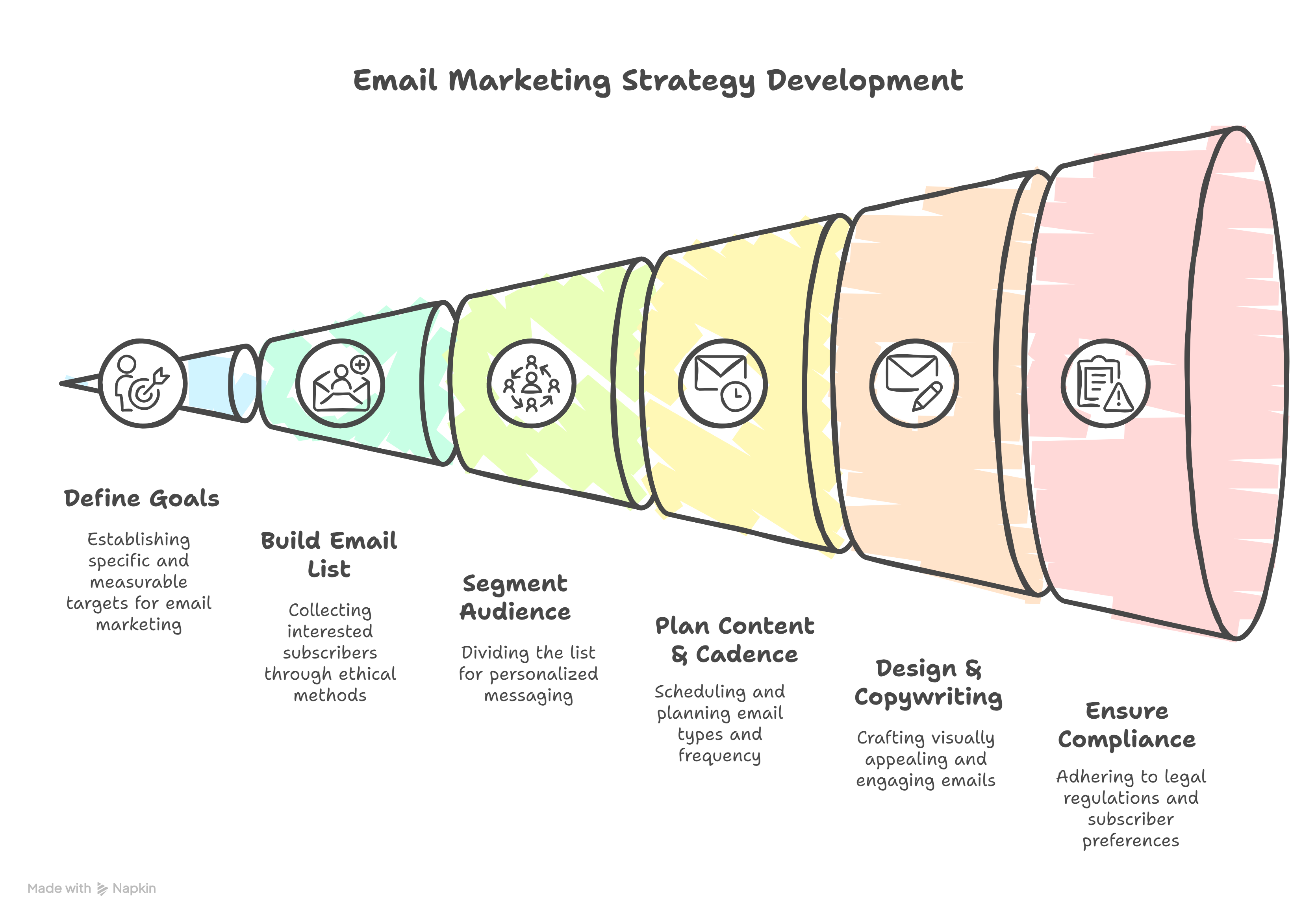Developing Your Email Marketing Strategy
A strategy guides your email marketing efforts, ensuring they align with your business objectives and resonate with your audience.
1. Define Your Goals
- Explanation: Start by clearly identifying what you want email marketing to achieve. Are you aiming to drive direct sales, nurture potential leads, increase website traffic, build brand loyalty, or grow your subscriber base? Make these goals specific and measurable (e.g., "Increase online sales attributed to email by 10% this quarter").
- Real-Life Example: A non-profit organization sets a goal: "Increase online donations received via email campaigns by 15% during the end-of-year giving season."
2. Build Your Email List
- Explanation: You need people to email! Focus on ethical methods to collect email addresses from interested individuals. Use sign-up forms on your website, offer valuable content upgrades (lead magnets like e-books or checklists) in exchange for an email, or use tasteful pop-ups. Never buy email lists – it harms deliverability, annoys recipients, and violates anti-spam laws. Quality subscribers who want to hear from you are far more valuable than a large list of uninterested people.
- Real-Life Example: A food blogger adds a sign-up form to their website sidebar offering a free PDF recipe book for "10 Quick Weeknight Dinners" to anyone who subscribes to their weekly newsletter.
3. Segment Your Audience
- Explanation: Don't send the same email to everyone. Divide (segment) your list into smaller groups based on shared characteristics like demographics (age, location), purchase history (past buyers, high spenders), engagement level (active vs. inactive subscribers), or expressed interests (topics they clicked on). This allows you to send more relevant and personalized messages.
- Real-Life Example: An online pet store segments its list into "dog owners" and "cat owners" based on past purchases. They send dog-related product promotions to the dog owner segment and cat-related promotions to the cat owner segment.
4. Plan Your Content & Cadence
- Explanation: Decide what types of emails you'll send (welcome, promotional, newsletter, etc.) and who gets them (which segments). Determine how often you'll send emails. Find a balance – be consistent so subscribers know when to expect emails, but avoid sending so frequently that you overwhelm or annoy them.
- Real-Life Example: A SaaS company plans a welcome email series for new trial sign-ups, a bi-weekly newsletter with industry tips for all subscribers, and occasional promotional emails about new features targeted to specific user segments based on their usage patterns.
5. Design & Copywriting
- Explanation: Pay attention to how your emails look and read. Use mobile-responsive designs (most emails are opened on phones). Write compelling subject lines to encourage opens and craft clear, concise email copy with strong calls-to-action (CTAs) telling people what to do next. Ensure your emails visually reflect your brand identity (logo, colors).
- Real-Life Example: A travel agency uses beautiful destination photos in their emails, writes subject lines like "Escape Winter: Hot Deals to the Caribbean Inside!", and includes clear buttons like "Explore Deals" or "Book Now".
6. Ensure Compliance
- Explanation: Follow email marketing laws and regulations like GDPR (Europe) and CAN-SPAM (US). Key requirements include obtaining clear consent before emailing, providing an obvious and easy way for people to unsubscribe in every email, honoring unsubscribe requests promptly, and clearly identifying who the sender is.
- Real-Life Example: Every marketing email sent by an online retailer includes a clear "Unsubscribe" link in the footer, along with their company name and physical address, ensuring they comply with anti-spam regulations.


No Comments